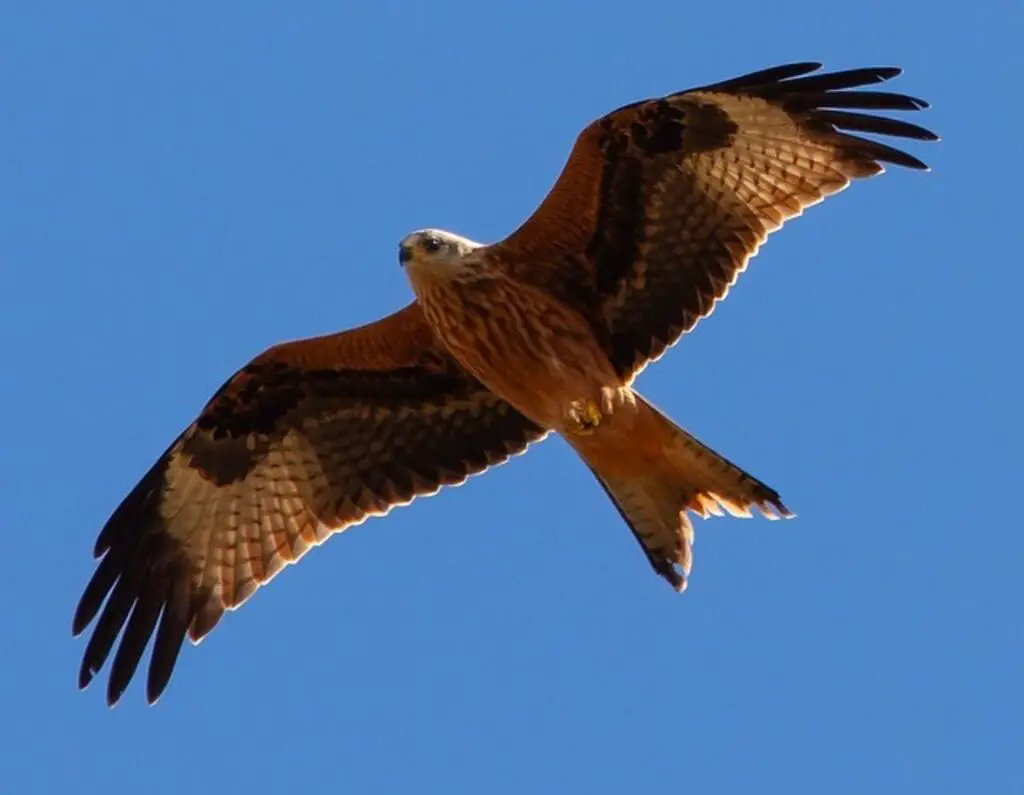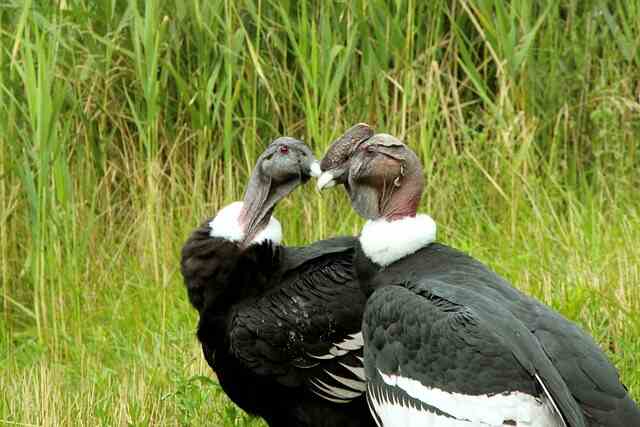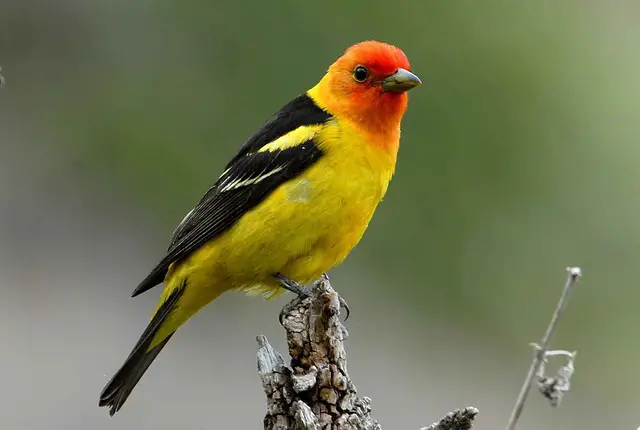Ever wondered how birdwatchers can identify birds so quickly? Visual cues for identifying birds include features like size, color patterns, beak shape, wing markings, and behavior. By paying attention to these details, you can recognize species with more confidence and accuracy. In this article, you’ll learn how to spot and interpret the most important visual clues to improve your bird identification skills in the field.
Table of Contents
- 1 Key Takeaways
- 2 Using Visual Clues to Recognize Bird Species
- 3 How Visual Cues Help Identify Birds
- 4 Understanding Bird Plumage and Coloration
- 5 Decoding Bird Shapes and Silhouettes
- 6 Behavioral Clues: How Birds Act and Move
- 7 Identifying Birds by Habitat and Range
- 8 Using Field Guides and Reference Materials
- 9 Photography and Bird Identification
- 10 Birdwatching Apps and Technology
- 11 Conclusion
- 12 FAQ’s
- 12.1 How do visual cues help in bird identification?
- 12.2 How can I identify birds by their plumage and coloration?
- 12.3 What can bird shapes and silhouettes tell me about identification?
- 12.4 How can bird behavior help with identification?
- 12.5 Can habitat and range be helpful in identifying birds?
- 12.6 What are some recommended field guides and reference materials for bird identification?
- 12.7 How can photography assist in bird identification?
- 12.8 Are there any birdwatching apps or technology that can aid in identification?
- 12.9 How can I improve my bird identification skills?
- 13 Author
Key Takeaways
- ✅ Visual cues are key to identifying birds quickly and accurately.
- ✅ Look for plumage, color, shape, size, and behavior.
- ✅ Habitat and range help narrow down bird species.
- ✅ Use field guides, apps, and photos to assist ID.
- ✅ Better ID skills lead to a deeper love for birds.
Using Visual Clues to Recognize Bird Species
Recognizing bird species through visual cues involves observing unique physical characteristics, such as coloration, size, beak shape, and markings, to identify and distinguish different bird species in their natural habitats.
How Visual Cues Help Identify Birds
When it comes to identifying birds, visual cues are essential. By observing a bird’s appearance and behavior, you can quickly narrow down the possibilities and make an accurate identification.
One of the most important visual cues to consider is a bird’s size and shape. Each species has a unique body structure that can help you differentiate between similar-looking birds. Pay attention to details such as the length of the bird’s tail, the shape of its beak, and the proportions of its wings and body.
Coloration is another crucial visual cue for bird identification. Each bird species has a distinctive color pattern, which can vary based on factors such as age, sex, and season. Be sure to observe the bird’s colors closely, noting any patches, stripes, or spots that may be present.
Behavioral cues can also be valuable when identifying birds. Notice how the bird moves and acts, and listen for any vocalizations it may make. For example, a bird that hops along the ground and pecks at the soil is likely a ground-foraging species, while a bird that soars high in the sky with a distinctive call is probably a raptor.
By taking these visual cues into account, you can become skilled in identifying birds by sight alone. Remember, practice makes perfect, so be sure to spend plenty of time observing different bird species in their natural habitats.
Understanding Bird Plumage and Coloration
Bird plumage and coloration are essential features for identifying birds, as they vary greatly among species. The color patterns and markings of a bird’s feathers are not only beautiful, but they can also offer critical clues to its identification.
Plumage: There are two primary types of plumage: breeding and non-breeding. Breeding plumage is the more colorful and ornate feathers that birds develop during the breeding season to attract a mate and defend territory. Non-breeding plumage is the more muted and simple feathers found on birds during the rest of the year. Understanding the differences in plumage between seasons can aid in identification.
Color patterns: Birds can have a range of color patterns, from solid colors to intricate patterns. Some common patterns include stripes, spots, and bars. Color patterns can be used to identify a specific bird species, especially when combined with other visual cues.
Markings: Markings on a bird’s feathers can include dots, streaks, patches, and eye-lines. These markings vary by species and can be used to differentiate between similar-looking birds. For example, the white eye-line on a Red-eyed Vireo is a distinctive feature that sets it apart from other vireo species.
Summary
Understanding the plumage and coloration of birds can enhance your birdwatching experience and aid in identifying specific species. By taking note of both breeding and non-breeding plumage, color patterns, and markings, you’ll be well on your way to becoming a more skilled birdwatcher.
Decoding Bird Shapes and Silhouettes
When it comes to identifying birds, understanding their unique shapes and silhouettes is essential. Bird shapes and proportions can vary greatly depending on the species, and recognizing these differences can provide valuable clues for identification. Here are some bird identification features and characteristics to look for:
| Bird Type | Shape and Proportions |
|---|---|
| Waterfowl | Large, heavy-bodied birds with long necks and bills. Their wings are broad and rounded, and their legs are set far back on their bodies. |
| Raptors | Large birds of prey with broad wings and a hooked beak. Their legs and talons are powerful and designed for hunting. |
| Passerines | Also known as perching birds, passerines are small and slim with short necks and bills. Their wings are pointed and their tails can vary in length and shape. |
When trying to identify a bird by its shape and silhouette, it’s important to consider the size, proportions, and overall impression of the bird. Is it large and heavy-bodied or small and light? Does it have a long, thin neck or a short, stocky one? By observing these bird identification features and characteristics, you can quickly narrow down the possibilities and identify birds with greater accuracy.
Behavioral Clues: How Birds Act and Move
Behavioral cues can provide important clues for identifying birds. A bird’s actions and movements can be distinctive and unique to their species. Some common behaviors to observe include:
- Foraging techniques: Some birds, such as woodpeckers, have a characteristic way of foraging for food by tapping on tree bark.
- Flight patterns: Birds have different flying styles that can help you identify them. For example, swallows have a swift and agile flight, while herons have slow and deliberate wing beats.
- Vocalizations: Bird songs and calls are unique to each species, and can be a helpful identifier. Pay attention to the pitch, rhythm, and duration of their calls.
It’s important to observe a bird’s behavior for an extended period of time, as they may exhibit specific actions that are not immediately apparent. For example, some birds may have a distinct mating dance that only occurs during the breeding season.
When observing a bird’s behavior, pay attention to their overall characteristics such as size, shape, and coloration. Combining these visual cues with their behavior can help you make an accurate identification.Next up, we will explore identifying birds by their habitat and range.
Identifying Birds by Habitat and Range
Understanding the habitat preferences and geographical distribution of different bird species is a crucial aspect of bird identification. By knowing which birds are commonly found in certain habitats and regions, you can quickly narrow down the possibilities when trying to identify a bird based on its location.
For example, if you are hiking in a wooded area and hear the distinctive call of a woodpecker, you can make an educated guess that the bird is most likely a member of the woodpecker family. Similarly, if you are near the coast and spot a medium-sized white bird with a long bill, it is likely a species of shorebird such as a sandpiper or plover.
To assist in identifying birds by habitat and range, utilize bird identification guides specific to your area. These guides will provide information on which birds are commonly found in your region and the types of habitats they prefer to inhabit. Many guides will also include range maps, showing the distribution of each species throughout the year.
Another helpful tool for identifying birds by habitat and range is to consult with local birding groups or organizations. These groups often have members who are well-versed in the avian life of the area and can provide valuable insight and guidance.
Identifying Birds by Habitat and Range: Key Takeaways
- Understanding bird habitat preferences and geographical distribution can aid in bird identification.
- Utilize bird identification guides specific to your area to learn which birds are commonly found in your region and their preferred habitats.
- Consult with local birding groups or organizations for additional guidance and insight.
Using Field Guides and Reference Materials
If you are just starting out in birdwatching, using a field guide can be overwhelming. Field guides are reference books that provide illustrations, photographs, and information about bird identification features, in addition to habitat and range.
When selecting a field guide, choose one that is specific to your location or region. This will help you learn about the most common bird species in your area first. Additionally, it is recommended to choose a guide with clear illustrations or high-quality photographs to aid in visual learning.
Tip: When using a field guide, start with the birds that are the easiest to identify, such as those with bold colors or unique shapes.
Aside from field guides, there are several other reference materials that can assist in bird identification. These include:
- Bird Identification Apps: Similar to field guides, bird identification apps provide illustrations, photographs, and descriptions of bird species. They also often include bird calls and vocalizations, making it easier to identify birds that you hear but cannot see.
- Birding Websites: There are several websites dedicated to birdwatching and identification, such as the Cornell Lab of Ornithology and Audubon. These websites provide detailed information and resources on bird species, identification techniques, and conservation efforts.
- Regional Bird Checklists: Many birdwatching organizations provide checklists of bird species that are commonly found in specific regions or habitats. These checklists can be useful in narrowing down the possibilities when trying to identify a bird.
Regardless of the reference material you choose, it’s important to remember that they are just tools and should not replace the experience of observing and learning about birds in their natural habitats.
Photography and Bird Identification
Photography can be a powerful tool in bird identification, especially when trying to identify a bird that you may not have seen before. Taking a clear photograph of the bird from different angles and positions can help you capture important visual cues that can aid in identification.
When taking bird photographs for identification purposes, it is important to consider the following techniques:
- Zoom in: Use a telephoto lens or digital zoom to capture close-up shots of the bird’s plumage, markings, and features.
- Focus on the eyes: The eyes are a key visual cue for bird identification. Make sure to focus on the eyes to capture their color and shape.
- Include context: Photograph the bird with its surroundings to provide context for its habitat and behavior.
- Take multiple shots: Take several photographs from different angles to capture all the relevant features of the bird.
Once you have taken your photographs, you can use them as a reference for identification by comparing them to field guides and online resources. Look for visual cues such as plumage color and pattern, bill shape and size, and overall body shape and size. You can also upload your photographs to bird identification apps and websites that use image recognition technology to identify bird species.
Birdwatching Apps and Technology
Technology has revolutionized the field of birdwatching, providing enthusiasts with a plethora of digital resources to enhance their identification and observation skills. Birdwatching apps like Merlin Bird ID, iBird, and Audubon Bird Guide offer comprehensive bird identification guides that include photos, descriptions, range maps, and even bird songs.
These apps use geolocation technology to identify birds in your area and provide real-time data on sightings, migration patterns, and population trends. Some apps also allow you to upload photos and share them with other birders for identification help.
In addition to birding apps, there are also various websites that provide useful resources for bird identification. The Cornell Lab of Ornithology and the Audubon Society offer extensive online bird guides, as well as birding hotspots and citizen science programs that allow birders to contribute to scientific research.
While technology can be a valuable tool in bird identification, it’s important to remember that it can never replace the thrill of observing birds in their natural habitats. Use these resources as a complement to your field guide and binoculars, and always prioritize respect for the birds and their habitats.
Conclusion
Congratulations! You have completed our comprehensive guide to bird identification through visual cues. By understanding the key features, characteristics, and behaviors of different bird species, you can now confidently identify birds in their natural habitats and enhance your birdwatching experiences.
Remember, mastering bird identification takes time, practice, and patience. Keep exploring the avian world, and you’ll encounter new species with unique visual cues to learn and appreciate. Here are some bird identification tips to keep in mind as you continue your journey:
1. Observe the bird carefully:
Take note of its size, shape, coloration, and behavior. All these visual cues can help you narrow down the possibilities and identify the bird with confidence.
2. Use field guides and reference materials:
These resources provide comprehensive information about bird species, visual identification tools, and bird songs that can aid in identification.
3. Take photographs:
Photography can be a powerful tool in bird identification. Learn how to effectively capture bird images and use them as a reference for identifying specific species.
4. Pay attention to habitat and range:
Different bird species have specific habitat preferences and ranges. Understanding their preferred habitats and geographical distribution can help you narrow down the possibilities when identifying a bird based on its location.
5. Be patient:
Identifying birds through visual cues can be challenging, but with time and practice, you’ll develop an eye for detail and enhance your bird identification skills.
We hope this guide has inspired you to explore the wonderful world of birdwatching and provided you with a solid foundation for identifying birds through visual cues. Happy birding!
FAQ’s
How do visual cues help in bird identification?
Visual cues provide immediate information about a bird’s features and characteristics, allowing birdwatchers to quickly narrow down the possibilities and identify birds with confidence.
How can I identify birds by their plumage and coloration?
Different bird species have unique plumage and color patterns. By studying the types of plumage, coloration, and markings, you can differentiate between similar-looking birds.
What can bird shapes and silhouettes tell me about identification?
Bird shapes and silhouettes are distinct for each species and can reveal important details about their classification. Understanding these unique shapes and proportions will aid in identifying birds, even from a distance.
How can bird behavior help with identification?
Birds exhibit specific behaviors and movements that can provide valuable clues for identification. By observing flight patterns, foraging techniques, and vocalizations, you can identify birds based on their actions.
Can habitat and range be helpful in identifying birds?
Yes, different bird species have specific habitat preferences and ranges. Understanding their preferred habitats and geographical distribution can narrow down the possibilities when identifying a bird based on its location.
What are some recommended field guides and reference materials for bird identification?
There are several excellent field guides and reference materials available for birdwatchers. Some popular options include “The Sibley Guide to Birds,” “National Geographic Field Guide to the Birds of North America,” and “Peterson Field Guide to Birds of North America.”
How can photography assist in bird identification?
Photography can be a powerful tool in bird identification. By capturing images of birds, you can use them as a reference to compare with field guides or consult with experienced birdwatchers to help identify specific species.
Are there any birdwatching apps or technology that can aid in identification?
Yes, there are several birdwatching apps and online resources available. Popular options include Merlin Bird ID, eBird, and Audubon Bird Guide. These apps provide detailed information, bird songs, and visual identification tools to assist in bird identification.
How can I improve my bird identification skills?
By mastering the visual cues and techniques discussed in this guide, you will be equipped with the knowledge and skills to confidently identify birds in their natural habitats. Practice regularly, join birdwatching groups, and continue learning through field experiences and study.






